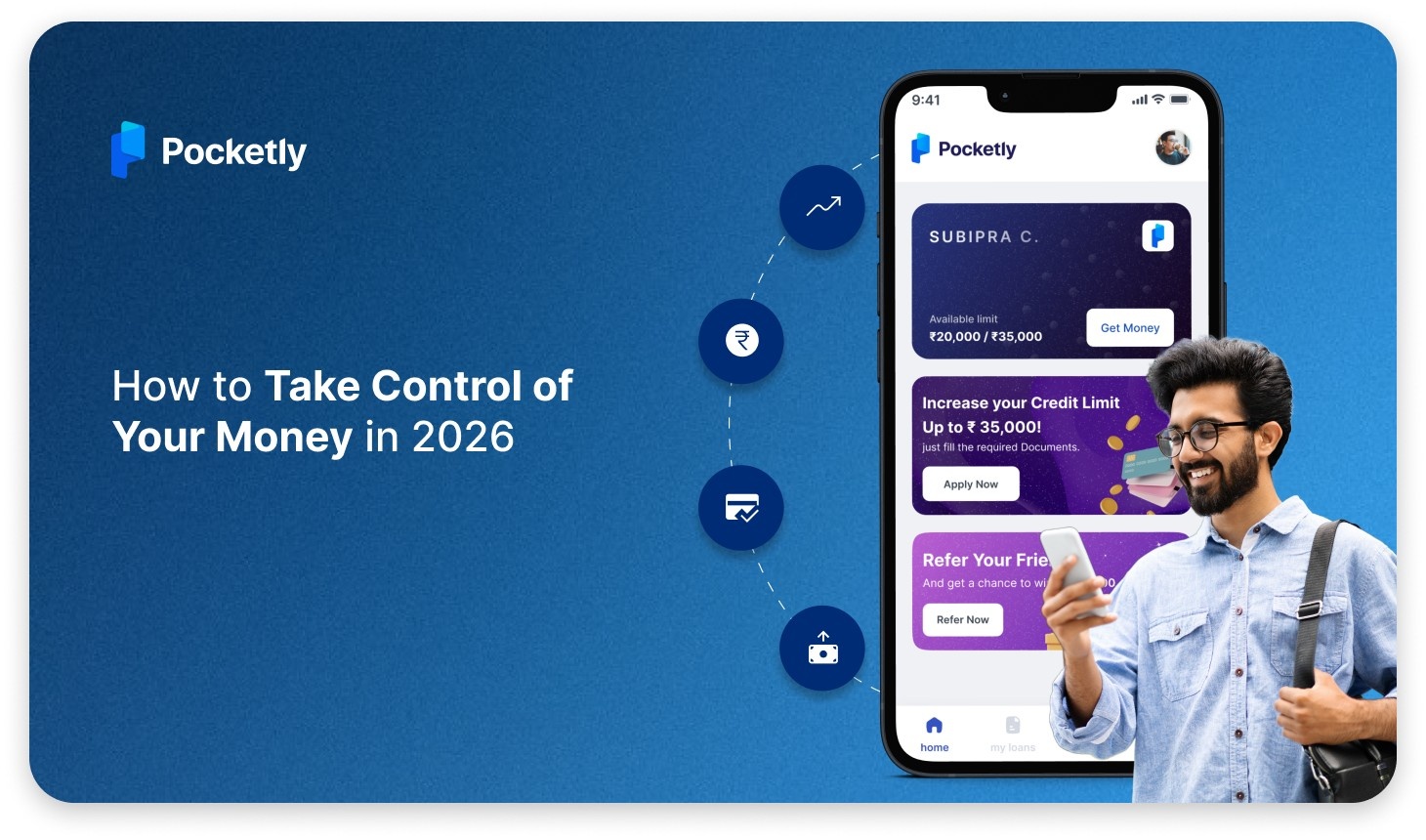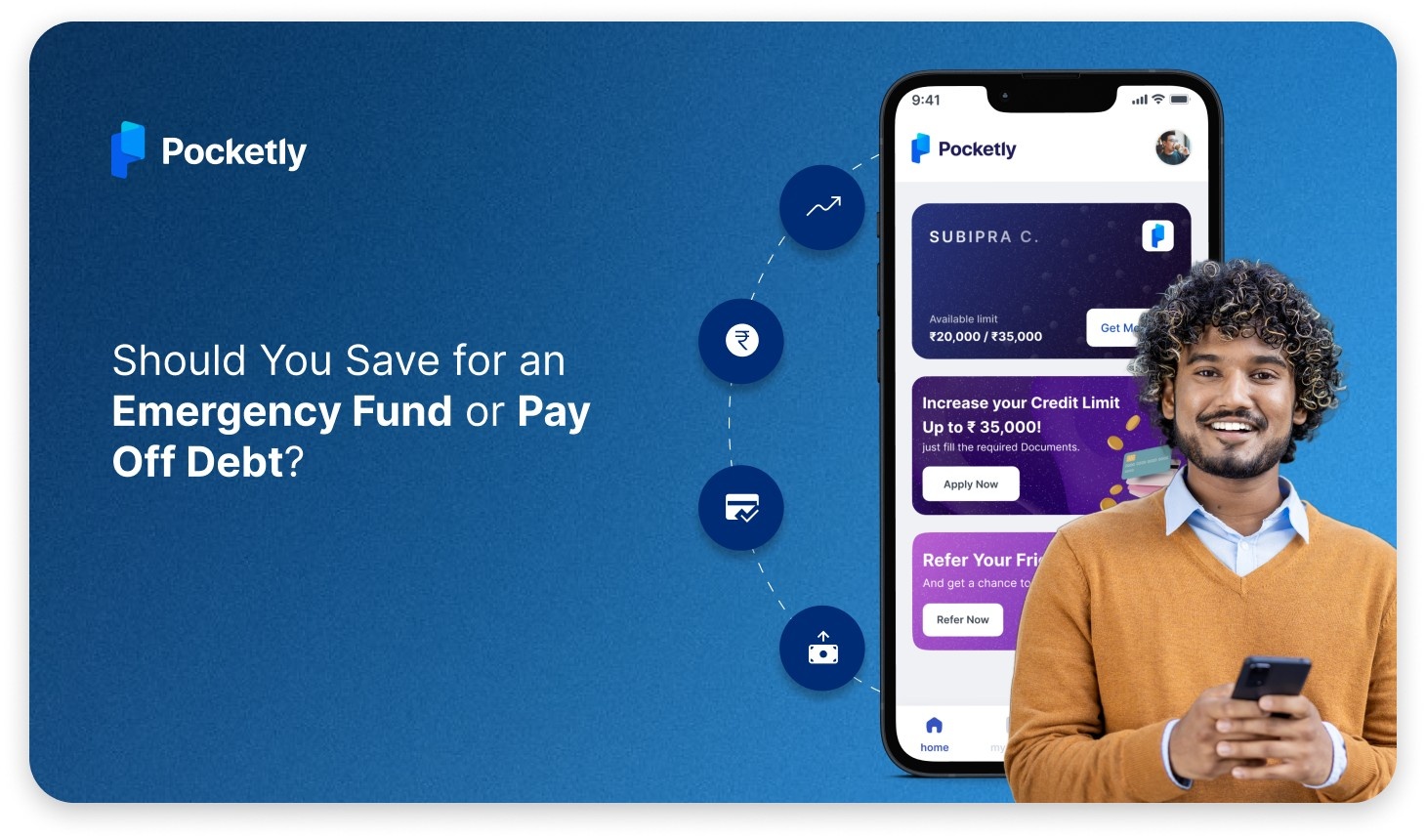
Personal loans in India have seen impressive growth, with RBI's sectoral data showing a 14.4% increase, reaching nearly ₹55.3 lakh crore. This surge highlights the growing need for financing across various sectors. A significant portion of these loans is secured by collateral, an asset pledged by the borrower to the lender.
Collateral loans are standard in home, car, and business financing, as they reduce the lender's risk, making it easier to access larger loan amounts at lower interest rates. However, the stakes are high for borrowers; failure to repay can result in losing the asset pledged as collateral.
In this blog, we'll explain a collateral loan, explore the types available, and walk you through the key features of this financing option. By the end, you'll better understand how collateral loans work and whether they're the right choice for your needs.
What is a Collateral Loan?
A collateral loan is a type of secured loan where the borrower offers an asset as security for the loan. In simpler terms, it's a loan in which the borrower provides a valuable item, such as a house, car, or savings account, as collateral to the lender. This gives the lender extra security: if the borrower defaults on the loan, the lender can confiscate the collateral and sell it to recoup the loan amount.
When you apply for a collateral loan, the lender assesses both your creditworthiness and the value of the asset you're offering as collateral. Considering these factors, the lender will provide you with a loan amount, usually a percentage of the collateral's value. This is called the loan-to-value ratio (LTV), which helps determine how much you can borrow.
For example, if you offer a car worth ₹500,000 as collateral, and the lender sets an LTV ratio of 80%, you could borrow up to ₹400,000. If you default on the loan, the lender can seize the car to recover their funds.
Key Features of a Collateral Loan
Understanding these features can help you determine if a collateral loan aligns with your financial needs. Let's explore some of the key features that make collateral loans a popular option for both lenders and borrowers:
- Secured Loan: Since an asset backs the loan, it is considered secured, which means the lender has legal rights to the collateral if the borrower defaults.
- Lower Interest Rates: Because the loan is secured by collateral, lenders are at lower risk, which often translates to lower interest rates compared to unsecured loans like personal loans.
- Higher Loan Amounts: With collateral securing the loan, lenders are often willing to offer higher loan amounts, which is beneficial if you need substantial funding.
- Risk of Losing the Collateral: The downside to offering collateral is the risk involved. If you default on the loan, you lose the asset you pledged as collateral, whether a car, property, or savings.
With these key features in mind, it's crucial to understand the risks, especially the potential loss of your asset if you fail to repay the loan.
You're probably thinking, 'Isn't a collateral loan just like an unsecured loan?' Let's explore how these options differ and which suits your needs better.
Also Read: Applying for Personal and Business Loan Based on ITR
Collateral Loan vs Unsecured Loan
When considering loan options, it’s important to compare collateral loans with unsecured loans to understand which one best suits your financial needs. Here’s a quick overview to highlight the main differences:
| Feature | Collateral Loan | Unsecured Loan |
|---|---|---|
| Collateral Requirement | Requires an asset (e.g., property, vehicle) as security. | No collateral required. |
| Interest Rates | Typically lower due to the reduced risk for the lender. | Higher interest rates since the loan is unsecured. |
| Loan Amount | Generally higher, based on the value of the collateral. | Usually smaller loan amounts, dependent on creditworthiness. |
| Risk for Borrower | Risk of losing the collateral if you fail to repay. | No risk of losing assets, but can impact credit score if unpaid. |
| Approval Process | Easier to get approved with valuable collateral. | Requires good credit history for approval. |
| Usage | Can be used for specific purposes (e.g., car, home). | Flexible, can be used for almost anything (e.g., personal expenses, debt consolidation). |
Choosing the right option hinges on collateral availability, interest rates, and the loan amount. With the key differences between collateral loans and unsecured loans covered, let’s look at the different types of collateral loans available and how each one works.
Types of Collateral Loans
Collateral loans come in various forms, each tailored to different needs and types of assets. By offering collateral, you're providing security to the lender, which often results in better loan terms, including lower interest rates and higher borrowing limits. Understanding the different types of collateral loans can help you choose the one that best suits your financial goals.
Let's explore the most common types of collateral loans:
1. Loan Against Property (LAP)
A loan against property (LAP) is a secured loan where you pledge your property, whether residential or commercial, as collateral. These loans are often used for large expenses such as business expansion or debt consolidation. Since the loan is secured by real estate, they generally offer lower interest rates.
- Common Use: Business funding, debt consolidation, home renovation
- Interest Rates: Relatively lower, as property is valuable collateral
- Risk: Potential loss of property if repayment is not made
2. Gold Loans
A gold loan allows you to borrow money by pledging your gold jewellery as collateral. These loans are popular for short-term needs and are relatively easy to get approved for, as gold is highly liquid and easily valued. The loan amount is typically based on the weight and purity of the gold pledged.
- Common Use: Emergency expenses, education, wedding expenses
- Interest Rates: Typically low to moderate
- Risk: Risk of losing the gold if the loan is not repaid
3. Vehicle Loan
A vehicle loan is a loan secured by a car, motorcycle, or any other type of vehicle. The vehicle serves as collateral, which allows the lender to offer lower interest rates compared to unsecured loans. If the borrower defaults, the lender can repossess the vehicle.
- Common Use: Purchasing a vehicle, financing repairs or upgrades
- Interest Rates: Generally lower due to the secured nature of the loan
- Risk: Risk of repossession if the loan is not repaid
4. Loan Secured by Investment
Your investments, such as mutual funds, stocks, bonds, or retirement savings accounts can secure some loans. By pledging your investment portfolio, you can access a loan without having to liquidate your assets. However, the lender may seize your investments if you default.
- Common Use: Education expenses, business investment, personal loans
- Interest Rates: Lower interest rates compared to unsecured loans
- Risk: Risk of losing your investments if you default
5. Equipment Finance
Equipment financing is a loan secured by the business equipment or machinery you own. Small business owners commonly use this type of loan to purchase new equipment or upgrade existing machinery. The equipment itself acts as collateral, reducing the risk for lenders.
- Common Use: Purchasing or leasing business equipment, machinery upgrades
- Interest Rates: Moderate to low, depending on the value of the equipment
- Risk: Risk of losing equipment if the loan is not repaid
6. Cash Collateral
A cash collateral loan requires you to deposit cash with the lender as collateral. This type of loan is often used for short-term borrowing needs. Because cash is a highly liquid asset, lenders offer favorable loan terms with low risk.
- Common Use: Short-term financing, securing credit lines
- Interest Rates: Very low due to the low risk to the lender
- Risk: Risk of losing the cash deposit if the loan is not repaid
7. Inventory Collateral
For businesses, inventory collateral loans are secured by the inventory the business holds, whether it’s goods, raw materials, or finished products. These loans are ideal for small business owners who need working capital or funds to manage their operations.
- Common Use: Business funding, managing cash flow, purchasing stock
- Interest Rates: Vary based on the business and inventory value
- Risk: Risk of losing inventory if the loan is not repaid
While collateral loans offer several benefits, Pocketly provides an alternative for those who prefer not to pledge assets. With Pocketly, you can access quick, flexible loans without collateral, giving you peace of mind while managing your financial needs.
With a clear understanding of the different types of collateral loans, it’s time to weigh the benefits and potential drawbacks. Let’s take a look at the pros and cons of collateral loans to help you make a balanced decision.
Also Read: Getting Personal Loan with Low CIBIL Score
Pros and Cons of Collateral Loans
Collateral loans can offer significant benefits, especially for those needing larger loan amounts or lower interest rates. However, as with any financial product, there are trade-offs to consider. Understanding the pros and cons of collateral loans is essential to making the best decision for your financial situation.
Pros of Collateral Loans
- Lower Interest Rates
- Since collateral reduces the lender's risk, collateral loans typically offer lower interest rates than unsecured loans. This can make borrowing more affordable, especially for large amounts.
- Higher Loan Amounts
- Collateral loans often allow borrowers to access larger loan amounts because the loan is backed by valuable assets. This is especially beneficial for individuals or businesses that require more substantial financing.
- Easier Approval
- Because the loan is secured by an asset, lenders are more likely to approve the loan, even for those with less-than-perfect credit. The collateral provides assurance to the lender, making it easier for borrowers to access funds.
- Flexible Terms
- Collateral loans often come with longer repayment terms and more flexibility. With the asset securing the loan, lenders may be more willing to offer terms that suit the borrower’s needs.
- Access to Quick Cash
- Many collateral loans, especially pawn loans or loans secured by investments, provide quick access to cash. The approval process is often faster, and the funds can be disbursed promptly.
Cons of Collateral Loans
- Risk of Losing Collateral
- The most significant disadvantage of a collateral loan is the risk of losing your asset if you fail to repay the loan. Whether it's a car, home, or gold, the lender can seize your collateral to recover their funds if you default.
- Potential for Overborrowing
- Since collateral loans allow you to borrow larger amounts, there's a risk of lending more than you can afford to repay. This can lead to financial strain and complications if you struggle to make the required payments.
- Asset Devaluation
- In the case of loans secured by vehicles, machinery, or inventory, the value of the collateral may decrease over time. If the asset loses value, you might not be able to secure as much money as you initially anticipated.
- Long-Term Debt
- Depending on the loan terms, collateral loans can lead to long-term debt obligations. While lower interest rates are an advantage, the borrower could be locked into repayment terms that span several years.
- Credit Impact
- If you default on a collateral loan, not only will you lose the pledged asset, but it could also have a negative impact on your credit score, making it harder to access future loans.
It’s crucial to carefully assess your financial situation and ability to repay the loan before committing to a collateral loan. Now that we've explored the pros and cons of collateral loans, let's walk through the process of applying for one. Understanding how to apply can help in taking steps more confidently and secure the funds you need.
Also Read: Credit Card for Low CIBIL Score in India
How to Apply for a Collateral Loan
Applying for a collateral loan involves several key steps, but it’s a relatively straightforward process. Since the loan is secured by an asset, the lender will assess the value of the collateral and your ability to repay the loan. Here’s a step-by-step guide to help you through the application process:
1. Determine the Collateral You’ll Use
The first step in applying for a collateral loan is to decide which asset you’ll pledge as security. This could be a property, vehicle, savings account, or any other valuable item the lender will accept. The type of collateral you choose will impact the loan amount and terms.
- Consider the Value: Choose an asset with sufficient value to secure the loan amount you need.
- Evaluate the Risks: Understand the risk of losing the asset if you fail to repay the loan.
2. Research Lenders and Loan Types
Next, research different lenders to understand what they offer and the terms they provide for collateral loans. Look for reputable institutions like traditional banks, credit unions, or online lenders. Compare interest rates, loan amounts, repayment terms, and fees.
- Compare Interest Rates: Ensure you're getting the best rate possible.
- Loan Terms: Check the repayment schedule, terms, and flexibility offered.
3. Prepare Required Documents
To apply for a collateral loan, you must provide several documents to verify your identity and the value of the collateral. Common documents include:
- Proof of Identity: Passport, driver's license, or government-issued ID.
- Proof of Ownership: Documents such as the title deed for property, registration for vehicles, or evidence of ownership for other assets.
- Financial Documents: Bank statements, income proof, or other documents to show your financial stability.
4. Submit the Application
Once you’ve gathered all required documents and compared lenders, you can submit your loan application. Some lenders may allow you to apply online, while others may require you to visit a branch in person. Be ready to provide details about the collateral, the loan amount you need, and your repayment capabilities.
5. Collateral Appraisal
After submitting the application, the lender will typically require an appraisal of the collateral to determine its value. This helps the lender calculate the loan-to-value ratio (LTV) and decide how much they’re willing to lend.
- Property: An appraiser may need to inspect the property or vehicle.
- Gold or Valuables: The lender may assess the market value of your gold, jewellery, or other valuables.
6. Loan Approval and Disbursement
If the lender is satisfied with the value of the collateral and your ability to repay, they will approve the loan. After approval, the loan amount will be disbursed, either in a lump sum or in installments, depending on the loan type.
- Loan Agreement: Review the terms of the loan agreement carefully before signing.
- Funds: Once everything is signed, the lender will transfer the funds to your bank account or as agreed.
Securing a collateral loan can be a strategic way to access larger sums of money at lower interest rates, but it's essential to understand the process and risks involved. Once you've assessed your options, the next step is choosing the right loan provider.
If you're looking for a fast, flexible, and hassle-free loan option, Pocketly offers a simple application process. Let's walk you through how to apply for a Pocketly loan with ease, using just a few easy steps.
How to Apply for a Pocketly Loan: A Step-by-Step Guide
Applying for a loan with Pocketly is quick and hassle-free. Just follow these simple steps:
- Step 1: Download and Register – Download the Pocketly app from the Google Play Store or the Apple App Store. Sign up with your mobile number to create an account.
- Step 2: Upload Required Documents – Submit basic KYC details like your Aadhaar and PAN cards. Make sure the documents are clear to avoid processing delays.
- Step 3: Complete KYC Verification – Verify your identity through Pocketly’s KYC process. Some users might be eligible for instant video KYC, speeding up approval.
- Step 4: Provide Your Bank Details – Enter your bank account information to ensure smooth and secure fund transfers. Once approved, the loan amount will be directly to your account.
- Step 5: Select Loan Amount & Repayment Tenure – Choose the loan amount and repayment period that works for you. Pocketly offers flexible options so you can repay comfortably.
- Step 6: Get Funds in Your Account – Once your loan is approved, the amount is deposited into your bank account almost instantly, giving you quick access to the money when you need it.
With minimal paperwork and a fast process, Pocketly makes borrowing simple, quick, and stress-free for self-employed professionals, students, and freelancers.
Conclusion
Collateral loans provide a valuable option for borrowers who need larger amounts of capital at competitive interest rates. However, they require careful consideration of the asset being pledged and the potential risks involved. By understanding the types of collateral available, the loan process, and the pros and cons, you can make an informed decision that aligns with your financial goals.
If you're looking for a more flexible and accessible option, consider exploring Pocketly. With a straightforward application process and no collateral required, Pocketly helps you access funds quickly, without the risks associated with secured loans.
Download Pocketly today and take control of your financial journey with ease!
FAQs
1. What is a collateral loan, and how does it work?
A collateral loan is a type of secured loan where you pledge an asset (e.g., property, vehicle, or savings) as security for the loan. If you fail to repay, the lender can seize the collateral to recover the funds.
2. What are the advantages of a collateral loan over an unsecured loan?
Collateral loans typically offer lower interest rates, higher loan amounts, and easier approval, especially for individuals with less-than-perfect credit. This is because the loan is secured by an asset, reducing the lender’s risk.
3. Can I use my car as collateral for a loan?
Yes, many lenders accept vehicles like cars, motorcycles, or trucks as collateral for loans. This is known as a vehicle loan, and it generally comes with lower interest rates compared to unsecured loans.
4. What happens if I default on a collateral loan?
If you default on a collateral loan, the lender has the legal right to seize the asset you used as collateral. For example, if you used your home as collateral, the lender could initiate foreclosure proceedings.
5. How is the value of collateral determined for a loan?
The value of the collateral is typically assessed by a professional appraiser or based on market value. Lenders usually offer a loan based on a percentage of the collateral’s value, known as the loan-to-value (LTV) ratio.

















